
Measure the mechanical properties of innovative materials
Discover an array of techniques that a Texture Analyser can be applied to measure the mechanical properties of innovative materials.

Why measure the mechanical properties of innovative materials?
Measuring the mechanical properties of innovative materials is vital for understanding their potential applications and limitations. As industries and technologies such as 3D printing evolve, there's an increasing demand for materials that can meet specific, often rigorous, criteria. Mechanical properties are key to determining whether a material withstands the forces that are required to be applied to it without a compromise to its expected deformation. Understanding structural integrity properties such as tensile strength, elasticity, and hardness can guide researchers and manufacturers in determining where these materials can be best used, ensuring durability and functionality.
Additionally, such measurements can pinpoint any vulnerabilities early in the development process, allowing for timely modifications. This ensures that these materials are both cost-effective to produce and safe in their intended applications. Furthermore, having a comprehensive understanding of a material's mechanical properties aids in regulatory compliance and can provide a competitive edge in markets where material innovation is a key differentiator. In essence, assessing these properties offers a roadmap for the optimal utilisation of new materials, ensuring they meet the multifaceted demands of modern industries.
Suppleness, disintegration, scoopability, cling force, springiness… To quantify these novel mechanical properties, fresh, creative, original, and fantastic materials require new testing methodologies. These physical characteristics might be advantageous or disadvantageous. You can only control them if you can measure them.
Due to the empirical or imitative way that the Texture Analyser range can be applied, it is called upon time and time again for use in innovative areas of industry such as the creation and development of new materials.
Unbound by fundamental or standard methods and analysis options, the Texture Analyser provides the flexibility of method development unavailable in other materials testing instruments. For this reason, it is found in countless recent patents applications where testing solutions for the measurement of properties of new materials are required for mechanical testing problems which cannot be assessed by applying rigid, old-fashioned standard method approaches.






How a Texture Analyser can be applied to innovative material mechanical property measurement
The manufacture and development of materials requires a deep understanding of their intrinsic properties to ensure suitability for specific applications, to innovate, and to maintain consistent quality. Utilising a Texture Analyser for the measurement of mechanical properties in this domain provides a wide range of benefits:
- Quality control and assurance: Regularly assessing mechanical properties like tensile strength, compressibility, and adhesion ensures that produced materials meet desired specifications, leading to consistent product quality across batches.
- Innovative material development: When developing new materials or improving existing ones, the Texture Analyser provides empirical or fundamental data that helps researchers understand how changes in formulation or processing affect mechanical properties.
- Predictive modelling: By understanding mechanical behaviour, manufacturers can predict how materials will perform under specific conditions, enhancing reliability when incorporated into final products.
- Optimised processing parameters: The Texture Analyser can help ascertain how different manufacturing processes (e.g., extrusion, moulding) influence material properties, allowing for process optimisation.
- Validation of material claims: For materials that are marketed with specific claims like "highly flexible" or "ultra-durable", a Texture Analyser can provide the quantitative data needed to substantiate these claims, bolstering credibility.
- Material comparisons: When considering multiple materials for a particular application, comparative testing using a Texture Analyser can assist in selecting the most appropriate material based on objective mechanical property data.
- Failure analysis: Should a material fail in its intended application, analysing its mechanical properties can provide insights into the causes of failure, facilitating improved designs or processing methods.
- Cost-efficiency: By determining the exact mechanical properties needed for an application, manufacturers can avoid over-engineering or using excess material, leading to cost savings.
- Regulatory and standards compliance: Many industries have set standards for material properties to ensure safety and performance. Using a Texture Analyser ensures materials are compliant with these standards, aiding in certifications and regulatory approvals.
- Sustainability and eco-friendliness: As there's a growing emphasis on sustainable and environmentally-friendly materials, assessing and optimising the mechanical properties of biodegradable or recyclable materials ensures they can functionally replace traditional materials without compromising performance.
- Customisation for client needs: Different clients might have specific requirements for mechanical properties based on their end-use applications. Using a Texture Analyser, manufacturers can tailor-make materials that fit these unique specifications.
- Life-cycle analysis: Understanding how the mechanical properties of materials change over time and under various conditions can help in predicting their lifespan, degradation rate, and end-of-life behaviour.
In essence, the use of a Texture Analyser in the manufacture and development of materials allows companies to maintain quality, innovate effectively, meet regulatory requirements, and make informed decisions that can lead to cost savings, improved performance, and sustainability. This instrumental insight supports the entire material lifecycle, from initial development to end-of-life considerations.
Typical measurements
A Texture Analyser, though originally designed to measure textural properties, can be adapted to measure several mechanical properties of materials. Depending on the probes and fixtures equipped, a Texture Analyser can assess:
Tensile strength and elasticity
The resistance of a material to a force trying to pull it apart. It measures the maximum force a material can withstand while being stretched before breaking.
Compressive strength
The resistance of a material to breaking under compression. It measures how much a material can be compressed before it either fractures or deforms permanently.
Peel strength
Determines the force needed to separate two bonded surfaces, commonly used in applications involving adhesives or laminates.
Frictional properties
Evaluating the coefficient of friction of materials to understand their slip or grip tendencies.
Viscoelastic properties
For soft materials or gels, understanding their combined viscous and elastic responses under stress.
Break and fracture resistance
Measuring the force or energy required to break or fracture a material.
Gel strength and consistency
Understanding the structural integrity and consistency of gel-like materials.
Adhesion and cohesion strength
Evaluating the internal strength of materials (cohesion) and their ability to stick to different surfaces (adhesion).
Shear strength
Measures the material's resistance to forces that can cause the internal structure to slide against itself.
Hardness
Depending on the material, an instrument can measure how resistant a surface is to penetration or permanent indentation.
Creep and relaxation
Observing how a material deforms under constant stress over time (creep) or how stress decreases over time under constant strain (relaxation).
Flexural/bending strength
The strength of a material when bent. It evaluates a material's resistance to deformation under bending load.
Puncture and penetration resistance
Assessing how much force it takes to puncture or penetrate the material.
Elasticity and Young's modulus
The ability of a material to return to its original shape after being stretched or compressed. Young's Modulus relates stress to strain, providing a measure of stiffness.
Swelling and absorption
For hydrogels or absorbent materials, evaluating their capacity to absorb liquids and swell.
Tear resistance
Evaluating the force necessary to start or continue a tear in a material.
Burst strength
Measuring the force at which a material will rupture.
Regardless of whether the test is performed in compression or tension, a resulting curve can be analysed to obtain the following typical parameters:
- Strain rate
- Young’s modulus
- Tangent, chord and secant modulus
- Breaking strain
- x% proof stress
- Maximum stress
- Hysteresis % Resilience
- Yield stress
- Strain to yield
- Energy to maximum stress
- Energy to failure
- Strain at maximum stress
When specifically measuring in tension: Flexure using three point bend for cuboid and cylindrical samples:
- Necking onset
- Ultimate tensile strength
- Strain hardening parameter
- Strength coefficient Yield stress
- Young’s modulus
- Flexural strength
- Toughness
Indentation using conical and spherical probes: Puncture of uniform thickness thin films using spherical probes:
- Indentation modulus
- Hardness
- Elastic energy
- Plastic energy
- Indentation energy Stiffness
- Strength
- Toughness
- Failure strain
The use of a Texture Analyser provides valuable insights into the mechanical properties of new materials, enabling researchers to optimise their formulations or production processes. By understanding these properties, researchers can refine materials to meet specific application requirements, ensuring functionality, durability, and reliability.
Typical product test and graph
Case studies
Whether its providing the solution for Kuraray Co to measure the compressive strength of their agricultural water retention material, allowing Patent Well to characterise the tack of polymer sealants for use on aircraft parts or offering a method for to measure the mechanical properties of edible utensils, a materials testing instrument is adaptable and flexible in its application to measure the bespoke mechanical properties of your product and then enable its quality to be controlled in your manufacturing to guarantee consistency and customer satisfaction.
New products that take new forms and have innovative properties require new testing solutions to ensure that the purpose for which they are designed is met and their structural or mechanical requirements match their intended location of use. A Texture Analyser is frequently relied upon for use in innovative fields of industry, such as the invention and development of novel materials, due to the empirical or imitative way in which it can be utilised. The Texture Analyser offers method creation flexibility not seen in other materials testing devices because it is not constrained by fundamental or standard methodologies and analysis possibilities. As a result of its universal application in all industries, it appears in a wave of recent patent applications where testing solutions for the measurement of properties of novel materials taking unusual sample forms are needed for mechanical testing challenges that can't be solved using rigid, old-school standard technique approaches.
The Texture Analyser is already being employed in peculiar ways that may surprise your usual expectations of using the instrument. Nothing is more exciting that the potential to create:
- Shape morphing aircraft skins (using the Resistance Conversion Unit attached to a TA)
- Self-healing materials for space missions,
- Deployable structure using bistable complaint mechanisms
- Skin inspired strain sensors for human motion monitoring
- Stealthy car clothing with a self-repairing function, or,
- Tactile electronic skin.
- Or, how about an unmanned vehicle whose flexible body is designed to mimic tilt sensing inspired from the way jellyfish move or,
- The creation of aqueous fragrance release gel formulations with considerable strength, elasticity and mouldability.
These novel developments need testing so that their properties can be quantified for comparison with any future redesign, modification or as a quality control benchmark when going into production.
With deep expertise in materials testing, we’re well equipped to support innovation in the innovative materials sector – just ask our customers.
Probes and attachments for measuring the mechanical properties of innovative materials
A wide range of probes and attachments can be integrated with our instruments, enabling precise testing tailored to the specific material or product under evaluation. Applications include tensile tests to assess material strength, bending tests to evaluate flexibility, and the use of a Volscan Profiler to capture detailed dimensional profiles of 3D-printed components.
Over the years, we have collaborated with leading scientists and organisations across multiple industries to design and refine attachments that address highly specific testing requirements. When a suitable solution does not already exist, we develop one – expanding our portfolio of Community Registered Designs and reinforcing our commitment to innovation in solving complex testing challenges.
The examples provided highlight a selection of specialised attachments and commonly performed measurements in this application area. This list is not exhaustive; a broad range of additional options are available for the testing of innovative materials. All instruments in the Texture Analyser range can be used to perform the tests described.
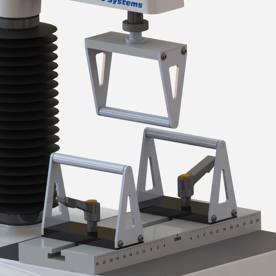
Three Point Bend Rig
Provides a flexural stiffness test.
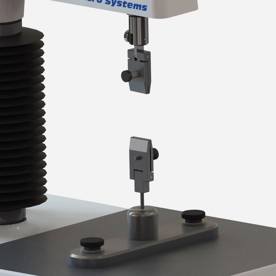
Articulated Tensile Grips
Allows the gripping of thin materials while also providing rotational flexibility.
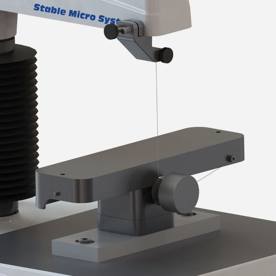
Adhesive Indexing System
Allows 90 degree peel testing via a sliding platform.
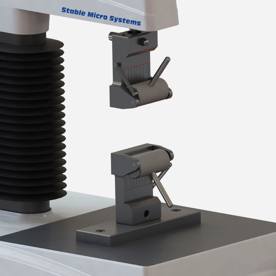
Self-tightening Roller Grips
Can be used to measure tensile strength of packaging where slippage at the grip face may be a problem.
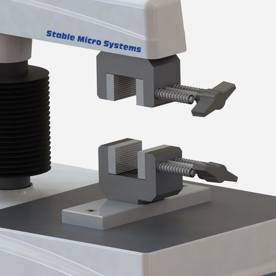
Tensile Grips
Used for the assessment of seal strength/tensile properties.
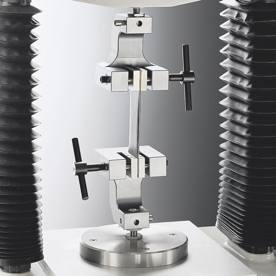
Heavy Duty Tensile Grips 5kN
For assessment of tensile properties requiring higher forces.
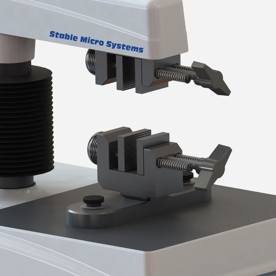
Pneumatic Grips
An alternative means of holding a sample for tensile testing as the gripping pressure can be controlled precisely.
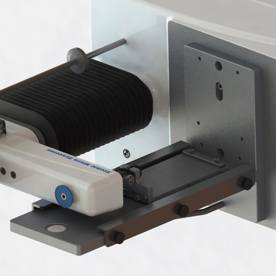
Horizontal Friction System
Used to assess packaging friction properties in a single direction or cyclic motion.
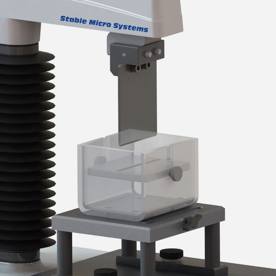
Mini Stickiness System
Provides means of measuring viscous polymer stickiness.
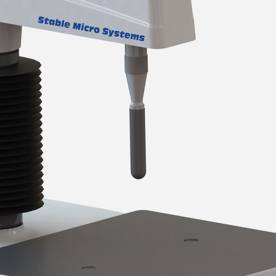
Domical/Hemispherical Probes
Allow measurement of keyboard/button actuation force.
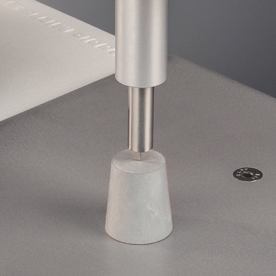
Indentation test using Shore / Vickers Hardness Probes
Example standard: ISO 7619-1
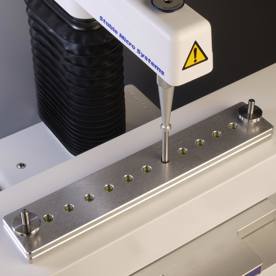
Automated Linear Indexing System
Enables multiple compression/adhesive measurements and is easily indexable and centrally oriented to the next test zone for sample placement.
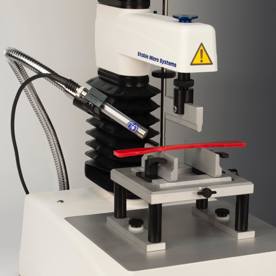
Acoustic Emission and Video Capture / Synchronisation
Collect acoustic data during a test and synchronise force data with video frames – of particular interest for the testing of brittle products.
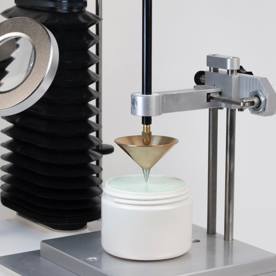
Penetrometer
Measure the resistance of a substance to penetration.
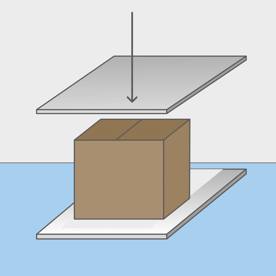
Box creep test
Example standard: ASTM D7030.
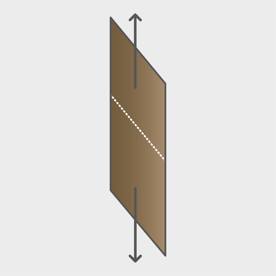
Perforation tensile test
Example standard: ASTM D4987.
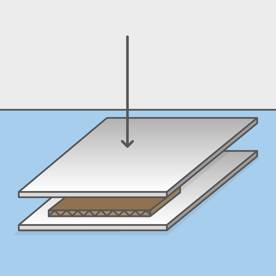
Flat crush test
Example standard: TAPPI T809.
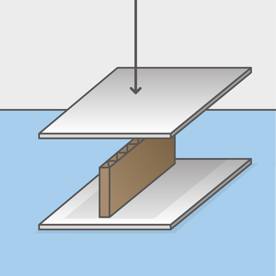
Edge crush test
Example standard: TAPPI T811.
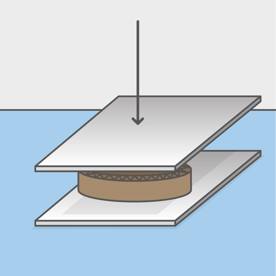
Ring crush test
Example standard: TAPPI T822.
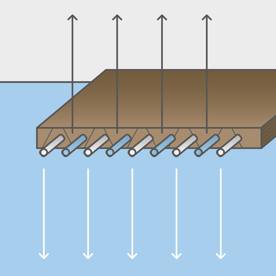
Pin adhesion test
Example standard: TAPPI T821.
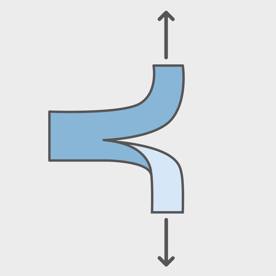
Tear 'trouser' test
Example standard: TAPPI T470.
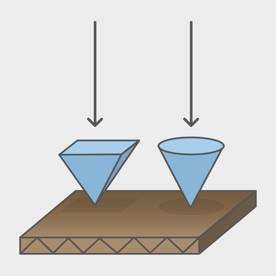
Puncture test
Test methods
A wide range of test methods for innovative materials is built into Exponent Connect software and will automatically load at the click of a button. We help make your texture testing methods quicker to access and the files for analysis of your product properties are ready to go.
Using the Texture Analyser for new innovative material and product ideas
Innovative material research is an expansive and dynamic field. Here are some of the newer ingredient and product ideas in materials research, development, and production and a typical academic reference to show how the Texture Analyser has already being applied:
Graphene
A single layer of carbon atoms arranged in a two-dimensional honeycomb lattice, graphene is known for its remarkable strength, electrical conductivity, and flexibility.
Shape memory alloys
Metals that "remember" their original shape and can return to it after deformation when exposed to a specific stimulus, often heat.
Bio-based plastics
Plastics derived from renewable biomass sources, like vegetable fats and oils or corn starch.
Metal-organic frameworks (MOFs)
Compounds consisting of metal ions or clusters coordinated to organic ligands, known for their extremely high surface areas.
Carbon nanotubes
Cylindrical molecules made of carbon atom sheets, known for their strength and electrical properties.
2D materials
Beyond graphene, materials like molybdenum disulfide, phosphorene, and boron nitride are being researched for their unique properties.
Nano-cellulose
Derived from plant matter and offers unique properties like high mechanical strength and biodegradability.
High Entropy Alloys (HEAs)
Alloys constructed with multiple principal elements, potentially offering unique combinations of properties.
Self-healing materials
Materials that can autonomously repair damage without external intervention, inspired by biological systems.
Aerogels
Ultra-light materials with extremely low densities, often dubbed "frozen smoke", known for their insulation properties.
Liquid crystal elastomers
Materials that combine properties of liquid crystals and elastomers, exhibiting unique shape-changing properties.
Biodegradable metals
Metals that dissolve or are absorbed in certain environments, often explored for medical implant applications.
Stimuli-responsive polymers
Polymers that undergo physical or chemical changes in response to external stimuli, like temperature, pH, or light.
Metamaterials
Man-made materials engineered to have properties not found in naturally occurring materials. These are often used to manipulate electromagnetic waves.
Bio-based and synthetic spider silk
Strong, lightweight, and biodegradable, with potential applications ranging from textiles to medical sutures.
The field of innovative materials research is vast, and the above list provides just a snapshot of the ongoing developments. As science and technology progress, we can expect an even broader range of advanced materials with novel properties and applications.





